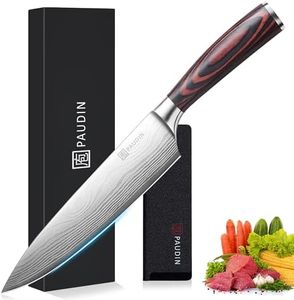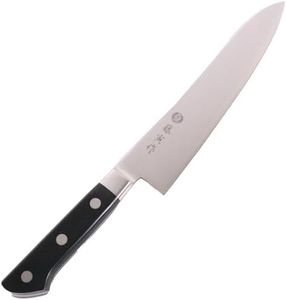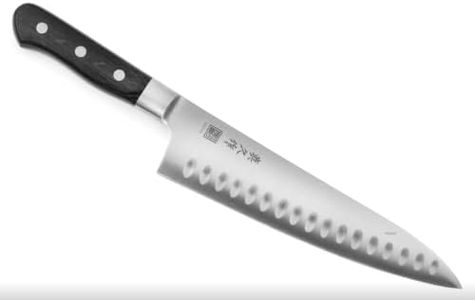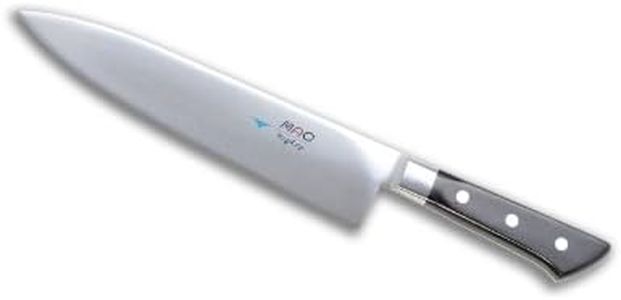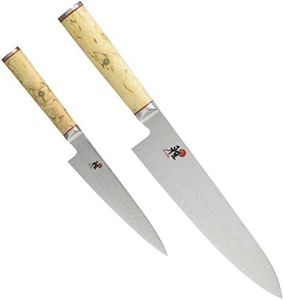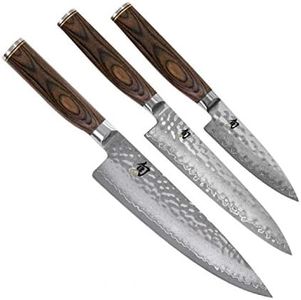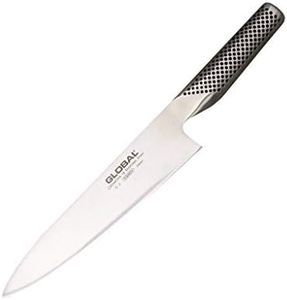We Use CookiesWe use cookies to enhance the security, performance,
functionality and for analytical and promotional activities. By continuing to browse this site you
are agreeing to our privacy policy
10 Best Chefs Knives
From leading brands and best sellers available on the web.By clicking on a link to a third party's website, log data is shared with that third party.
#1
Winner
Buying Guide for the Best Chefs Knives
Choosing the right chef’s knife can greatly enhance your cooking experience. A good chef’s knife should feel like a natural extension of your hand, offering precision, comfort, and versatility for a variety of tasks, from chopping vegetables to slicing meats. Focus on your own cooking habits and preferences to find a knife that helps you work faster and safer in the kitchen.Blade LengthBlade length refers to how long the cutting edge of the knife is, typically measured in inches or centimeters. Most chef’s knives range from 6 to 10 inches. Shorter blades around 6-7 inches offer more control and are good for smaller hands or precise tasks, while longer blades (8-10 inches) make it easier to cut larger items and can work faster for some tasks. Consider how comfortable you feel handling longer versus shorter knives and match your choice to the types of foods you prepare and your hand size.
Blade MaterialChef’s knife blades are commonly made from stainless steel, high-carbon steel, or sometimes ceramic. Stainless steel is resistant to rust and easy to maintain, while high-carbon steel holds a razor-sharp edge longer but may require more care to avoid staining. Ceramic blades are lightweight and very sharp, but can chip more easily and are harder to sharpen at home. Think about how much maintenance you’re willing to do and what type of cutting edge you prefer—easy care, sharpness, or lightweight use.
Blade ShapeThe shape of the blade can affect how you use the knife. Some chef’s knives have a curved edge (often called a Western style), which allows for a rocking motion while cutting, good for mincing herbs or chopping vegetables. Others have a straighter edge (sometimes called a Japanese style or Santoku), which is better for up-and-down chopping. Think about the motions you naturally use when preparing food and choose a shape that matches your preferred technique.
Handle Comfort and MaterialHandle comfort is crucial for both safety and performance. Handles can be made from plastic, wood, or composite materials. Each feels different: wood is traditional and warm but may need extra care, plastics are durable but can get slippery, and composites balance both durability and grip. The shape should fit comfortably in your hand without causing strain—trying a knife in-person can help you judge this. Pick a handle that feels secure and matches your typical grip style.
Weight and BalanceKnives vary in weight and how balanced they feel between the blade and handle, affecting fatigue and control. Heavier knives can make chopping easier due to their own weight, while lighter knives give you more speed and precision. Proper balance ensures you don’t strain your wrist. It's very personal: some people prefer a weightier feel, while others like lighter tools. Test different options if you can and think about what feels best during longer cooking sessions.
Ease of SharpeningSome knives are easier to sharpen than others. High-quality steel and straight-edged blades are typically simpler to maintain at home, while extremely hard or unusually shaped blades may require professional sharpening. If you like your knife super sharp all the time, choose one that you can easily maintain. If you prefer to maintain knives less often, consider one that holds its edge for a long time.

